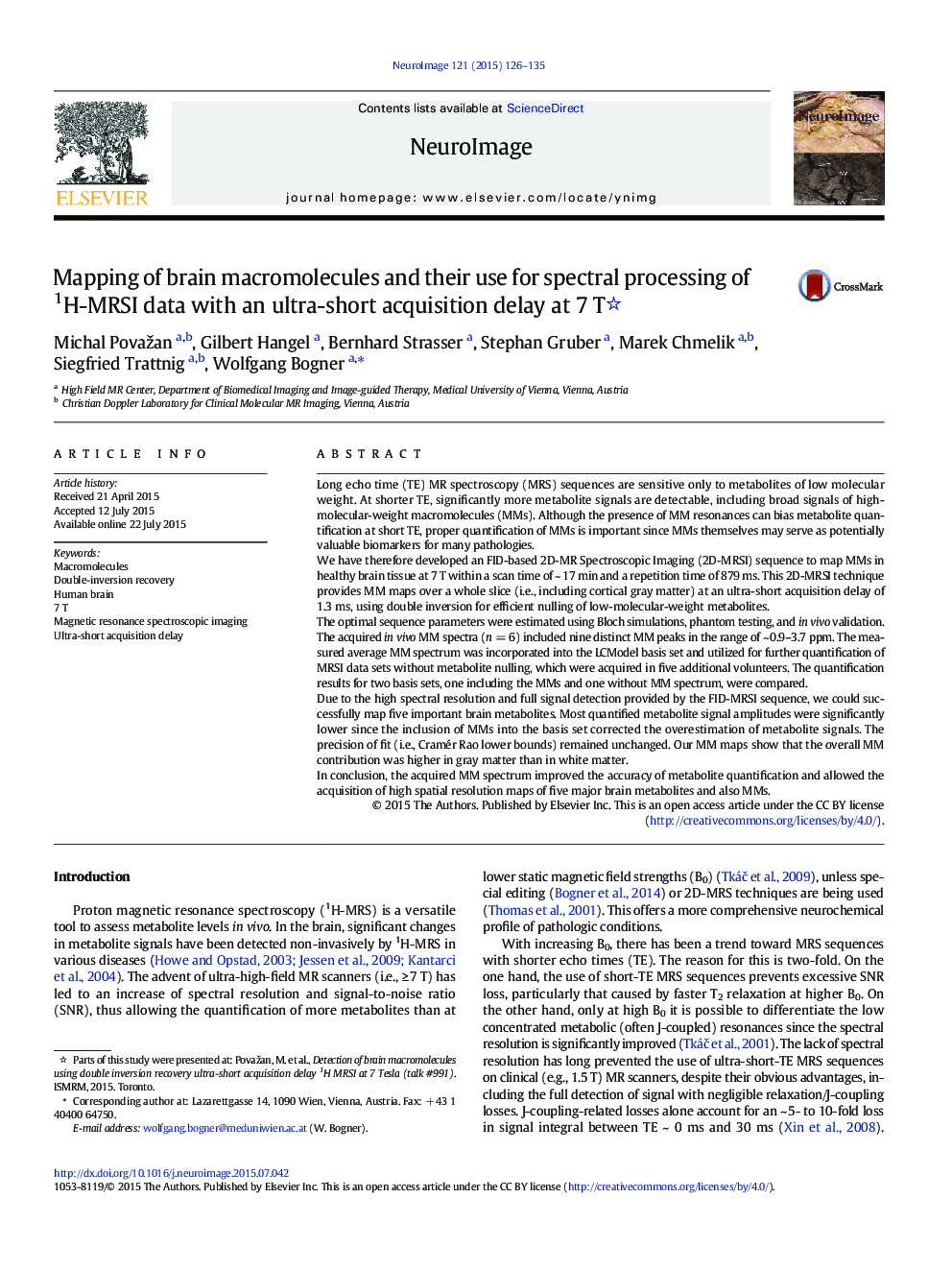| کد مقاله | کد نشریه | سال انتشار | مقاله انگلیسی | نسخه تمام متن |
|---|---|---|---|---|
| 6024772 | 1580886 | 2015 | 10 صفحه PDF | دانلود رایگان |

- Macromolecules bias the accurate quantification of metabolites.
- Macromolecular changes in brain may possess clinical relevance.
- We detected macromolecular signal using double-inversion recovery at 7Â T.
- Macromolecular spectrum was included in basis set.
- We created high-resolution maps of metabolites and macromolecules.
Long echo time (TE) MR spectroscopy (MRS) sequences are sensitive only to metabolites of low molecular weight. At shorter TE, significantly more metabolite signals are detectable, including broad signals of high-molecular-weight macromolecules (MMs). Although the presence of MM resonances can bias metabolite quantification at short TE, proper quantification of MMs is important since MMs themselves may serve as potentially valuable biomarkers for many pathologies.We have therefore developed an FID-based 2D-MR Spectroscopic Imaging (2D-MRSI) sequence to map MMs in healthy brain tissue at 7 T within a scan time of ~ 17 min and a repetition time of 879 ms. This 2D-MRSI technique provides MM maps over a whole slice (i.e., including cortical gray matter) at an ultra-short acquisition delay of 1.3 ms, using double inversion for efficient nulling of low-molecular-weight metabolites.The optimal sequence parameters were estimated using Bloch simulations, phantom testing, and in vivo validation. The acquired in vivo MM spectra (n = 6) included nine distinct MM peaks in the range of ~ 0.9-3.7 ppm. The measured average MM spectrum was incorporated into the LCModel basis set and utilized for further quantification of MRSI data sets without metabolite nulling, which were acquired in five additional volunteers. The quantification results for two basis sets, one including the MMs and one without MM spectrum, were compared.Due to the high spectral resolution and full signal detection provided by the FID-MRSI sequence, we could successfully map five important brain metabolites. Most quantified metabolite signal amplitudes were significantly lower since the inclusion of MMs into the basis set corrected the overestimation of metabolite signals. The precision of fit (i.e., Cramér Rao lower bounds) remained unchanged. Our MM maps show that the overall MM contribution was higher in gray matter than in white matter.In conclusion, the acquired MM spectrum improved the accuracy of metabolite quantification and allowed the acquisition of high spatial resolution maps of five major brain metabolites and also MMs.
214
Journal: NeuroImage - Volume 121, 1 November 2015, Pages 126-135